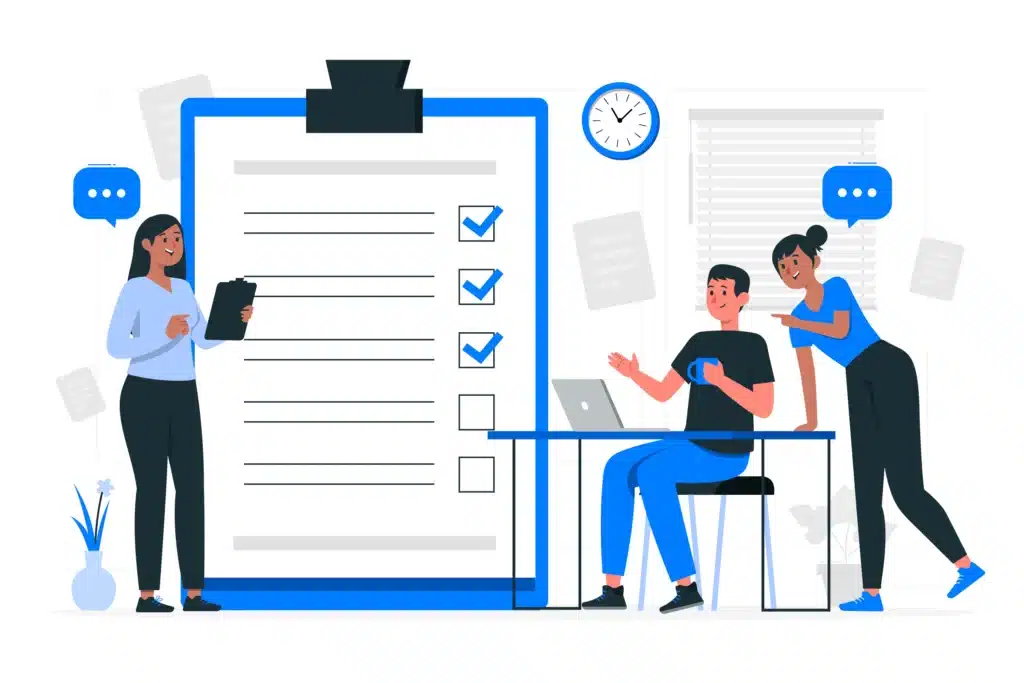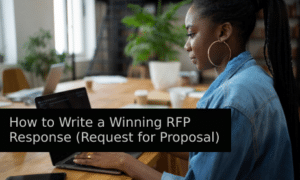Creating a sales proposal that converts is a vital skill for any business or salesperson. A well-written proposal not only showcases your products or services but also persuades potential clients to choose your offering over competitors. In this article we discuss some key steps and tips to help you create a sales proposal that converts effectively.
Why are Sales Proposals Important?
A well-created sales proposal can be the difference between securing a new client and missing out on a valuable opportunity. It allows you to:
- Clearly communicate your value proposition: Effectively showcase how your offering directly benefits the client and solves their specific pain points.
- Stand out from the competition: Differentiate your company by demonstrating a deep understanding of the client’s situation and tailoring your solution accordingly.
- Build trust and credibility: Present yourself as a knowledgeable and reliable partner, increasing the client’s confidence in choosing you.
- Increase conversion rates: A good proposal can significantly improve your chances of closing the deal and securing a new client.

Different Types of Sales Proposals
- Solicited Proposals: These are proposals created in response to a specific request from a potential client, often following an RFP (Request for Proposal) outlining their requirements.
- Unsolicited Proposals: These are proposals initiated by your company to introduce your product/service to a prospect who may not be actively seeking a solution.
Understanding the context and tailoring your approach accordingly is important for success with both types of proposals. Solicited proposals require a close adherence to the RFP guidelines, while unsolicited proposals need to effectively capture the prospect’s attention and demonstrate why your solution is relevant to their needs.
Understanding Your Audience: The Key to a High-Converting Sales Proposal
To truly resonate with potential clients and secure their business, you need to tailor your sales proposals to their specific needs and challenges. This requires a deep understanding of their company, goals, and pain points.
Why Tailoring Matters
- Relevance and Impact: When your proposal directly addresses the client’s unique situation, it becomes more relevant and impactful. Generic proposals often fail to connect and leave a lasting impression.
- Differentiation: By focusing on the client’s specific challenges, you stand out from competitors who offer generic solutions. This demonstrates a genuine understanding of their situation and positions you as the ideal partner.
- Building Trust: Tailoring your proposal shows the client you haven’t just sent a templated document. You’ve invested time and effort in understanding their needs, building trust and confidence in your ability to deliver results.
Researching Your Prospect
Thorough research is the foundation for writing a client-centric proposal. Here are some methods for gathering important information:
- Company Website: This is your first stop. Analyze the company’s mission, values, products/services, target audience, and recent news/press releases.
- Social Media: Platforms like LinkedIn, Twitter, and industry-specific forums offer valuable insights into the company’s culture, recent activities, and employee engagement.
- Industry Reports & Research: Leverage industry reports and research to understand broader trends, challenges, and opportunities within the client’s specific sector.
- News Articles & Press Releases: Stay updated on the company’s recent developments, financial performance, and any potential challenges they might be facing.
- Discovery Calls: Schedule in-depth conversations with key decision-makers to directly understand their specific needs, priorities, and pain points.
- Questionnaires: Utilize targeted questionnaires to gather specific data and insights from various stakeholders within the client’s organization.

By actively researching and engaging with your prospect, you gain valuable insights that empower you to write a proposal that resonates deeply with their specific situation. This personalized approach significantly increases the likelihood of securing their business and converting them into loyal customers.
Writing a Convincing Narrative: The Power of Storytelling in Sales Proposals
Facts and figures are essential in a sales proposal, but they often lack the emotional engagement that drives action. This is where the power of storytelling comes in. By weaving an interesting narrative, you can transform your proposal from a dry document into a captivating story that resonates with the prospect on a deeper level.
Structuring Your Sales Proposal as a Problem-Solution Narrative:
Think of your sales proposal as a three-act story:
- Act 1: Setting the Stage (The Problem):
- Introduce the prospect’s company and its current situation.
- Clearly identify their specific challenges and pain points, using the information you gathered through research and client interactions.
- Quantify the negative impact these challenges are having on their business (e.g., lost revenue, decreased productivity, customer dissatisfaction).
- Create a sense of urgency by highlighting the potential consequences of inaction.
- Act 2: Introducing the Hero (Your Solution):
- Present your product or service as the solution to their specific problems.
- Explain how your offering directly addresses each pain point identified in Act 1.
- Showcase the unique features and benefits that differentiate you from competitors.
- Use clear and concise language, avoiding technical jargon that might alienate the reader.
- Act 3: A Happily Ever After (The Transformation):
- Paint a picture of the positive outcomes the prospect can achieve by partnering with you.
- Quantify the potential benefits and improvements your solution will bring (e.g., increased revenue, improved efficiency, enhanced customer satisfaction).
- Include case studies, testimonials, or data showcasing how you’ve successfully helped similar clients overcome similar challenges.
By using storytelling techniques and structuring your proposal as a problem-solution narrative, you can create a good and persuasive document that resonates with the prospect on an emotional level, significantly increasing your chances of converting them into a loyal customer.
Key Components of a High-Converting Sales Proposal
Executive Summary:
This serves as the first impression and sets the tone for the entire proposal. Its purpose is to quickly grab the prospect’s attention and provide a clear understanding of the value proposition.
Key elements to include:
- Value Proposition: Briefly summarize how your solution directly benefits the prospect.
- Key Benefits: Highlight the most significant advantages your offering provides.
- Call to Action (CTA): Clearly state the desired next step, whether it’s scheduling a meeting, signing a contract, or making a purchase.
Problem & Pain Points:
Effectively identifying and addressing the prospect’s specific problems are important for a compelling proposal.
- Identifying Pain Points: Leverage your research and client interactions to pinpoint the specific challenges they face.
- Quantifying the Impact: Demonstrate the negative consequences these problems have on their business (e.g., lost revenue, decreased productivity, customer dissatisfaction).
- Creating Urgency: Highlight the potential risks associated with inaction, motivating the prospect to seek a solution.
Your Proposed Solution:
Here’s where you showcase your product/service as the ideal solution to their identified problems.
- Tailored Solution: Clearly explain how your offering directly addresses each pain point identified earlier.
- Features & Benefits: Focus on the specific features of your product/service and how they translate into tangible benefits for the prospect.
- Differentiation: Emphasize what sets you apart from competitors and why your solution is the best fit for their unique needs.
Credentials & Social Proof:
Establishing your credibility and expertise is essential for building trust and confidence in your proposed solution.
- Social Proof Elements: Include case studies, testimonials, and awards that demonstrate your success in helping similar clients overcome similar challenges.
- Industry Recognition: Highlight any industry certifications, awards, or positive media mentions that showcase your expertise.
Pricing & Value Proposition:
Presenting pricing information clearly and transparently is crucial to avoid confusion and objections.
- Transparency: Outline your pricing structure in a straightforward and easy-to-understand manner.
- Value Proposition: Focus on how your solution saves the prospect money or generates additional revenue, justifying the investment.
- Return on Investment (ROI): If possible, quantify the potential return on investment your solution offers, demonstrating its financial benefit.
Call to Action (CTA):
A clear call to action is essential for driving action and securing the deal.
- Specificity: Clearly state the desired next step, whether it’s scheduling a demo, appending an e-signature, or making a payment.
- Urgency: Create a sense of urgency to encourage the prospect to act now and avoid missing out on the opportunity.
- Multiple CTAs: Consider including multiple CTAs throughout the proposal, offering different ways for the prospect to engage with your offer.
Additional Tips for Success
Design & Formatting:
First impressions matter. A professional and visually appealing layout significantly enhances the perceived value of your proposal. Here’s why:
- Readability: Utilize clear and consistent formatting, including headings, subheadings, bullet points, and white space to break up text and improve readability.
- Visual Appeal: Incorporate relevant visuals like charts, graphs, and images to make the content more engaging and memorable.
- Branding: Maintain consistent branding throughout the proposal by using your company logo, colors, and fonts.
Proofreading & Editing:
Typos, grammatical errors, and inconsistencies can undermine your credibility and professionalism.
- Error-Free: Thoroughly proofread and edit your proposal for any grammatical errors, typos, or inconsistencies in formatting.
- Fresh Perspective: Take a break after writing and come back with fresh eyes to ensure accuracy and clarity.
- Double-Check: Ask a colleague or proofreader to review your document for any missed errors.
Follow Up:
Submitting your proposal is just the first step. Effective follow-up is vital for securing the deal.
- Timely Communication: Reach out to the prospect within a reasonable timeframe after submitting the proposal to thank them for their time and reiterate your interest.
- Address Concerns: Be prepared to answer any questions or address any concerns they might have.
- Next Steps: Reiterate the desired next step (e.g., schedule a call, sign a contract) and make it easy for them to take action.
Try out this SaaS Sales Proposal Template

Conclusion
Creating a sales proposal that converts requires a strategic approach, understanding your audience, showcasing your value proposition, and providing clear, convincing information. By following these steps, you can increase your chances of winning clients and closing successful deals. If you’re considering proposal writing software to help you on your journey to writing winning sales proposals, look no further than Prospero. Sign up now and start creating winning sales proposals.




